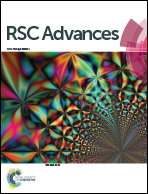Assessment of QCM array schemes for mixture identification: citrus scented odors†
Abstract
QCM sensor arrays are promising systems for volatile complex mixture analysis. Such mixtures, sometimes termed odors, can prove to be challenging targets for accurate identification using conventional approaches. As a result, development of novel gas sensing systems and materials for identification of complex mixtures has garnered much interest in recent years. Herein, we present a comparative study between traditional and alternative quartz crystal microbalance (QCM) array sensing schemes for complex mixture identification. In this study, several citrus scented odors were chosen for identification using three different QCM sensing scheme. A traditional multisensor array (MSA) scheme was compared to a recently introduced virtual sensor array (VSA) scheme and identification results were found to be comparable (84–91% to 73–98% accurate). In addition, a new sensing scheme developed by combining complementary MSA and VSA schemes is introduced. In this regard, a virtual multisensor array (V-MSA), with enhanced data density, allowed accurate identification (100%) of complex mixtures (odor samples) over multiple concentrations. While each method employed is promising, the newly presented V-MSA scheme is superior to each of the previously presented array sensing methods for complex mixture analysis. To the best of our knowledge, this is the first report of a QCM V-MSA.


 Please wait while we load your content...
Please wait while we load your content...